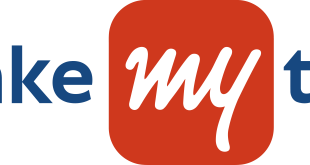· No increase in the rate for entry-level motorcycles and scooters (75 cc-150 cc), the largest segment by volumes in the domestic market (~89%)
· Increase in on-road price for the premium segment on account of the rate hike also not significant (<1%) The third-party insurance premium for two-wheelers has been revised after a two-year moratorium due to the Covid-19 pandemic, with the new rates coming into effect from June 1, 2022. The rates have been hiked for the premium category (15%-21% increase for >150 cc category), while there has been no increase for the entry-level motorcycles and scooters (75 cc-150 cc), the largest segment by volumes in the domestic market (~89%). As per the ICRA note, the increase in third party insurance premiums is thus unlikely to materially impact 2W demand. Given the fact that the increase in road price for the premium segment on account of the rate hike is also not significant (<1%); the rate hike is unlikely to have a major impact on consumer sentiments and comes as a relief for the industry, which has been grappling with muted demand. It may be recalled that the changes in the motor insurance policy for new two-wheelers had come into effect in September 2018, which entailed an increase in third party cover (TPC) from one year to five years, leading to a sharp increase in cost of acquisition (~6-7%). Commenting on the impact of the rate hike on the two-wheeler industry, Mr. Rohan Kanwar Gupta, Vice President, Corporate Ratings, ICRA, says, “Domestic 2W industry volumes contracted for a third consecutive year in FY2022, with the consumer sentiments remaining muted. The cost of ownership of a two-wheeler has been steadily increasing over the years, thereby impacting affordability. OEMs have been forced to hike prices on account of multiple factors – raw material hardening, transition to stringent emission norms and changes mandated by regulations, especially with regards to safety standards. In FY2022, even as there was no impact of regulatory notifications on prices, the OEMs had to pass on raw material hardening impact through multiple price hikes. As a result, enhanced cost of acquisition coupled with heightened crude prices have led to a significant increase in the cost of the ownership.” Aided by a recovery in rural sentiments post a healthy rabi harvest and pent up demand for festivals and weddings, wholesale volumes of motorcycles posed a recovery in April and May; reopening of education institutes and reversal in work-from-home trends in corporate India also supported the scooter offtake, thereby raising hopes of recovery in prospects of the two-wheeler industry. As demand remains fragile, a further increase in the cost of acquisition could have constrained demand recovery for 2Ws in the near term. In this regard, the fact that the entry-level two-wheeler segment has been left out of the insurance price hike, comes as a relief for the industry. Even as inflationary pressures and elongated semiconductor chip shortage due to the ongoing Russia-Ukraine conflict continue to remain headwinds for the industry, a broader vaccination coverage, reopening of education institutes and corporates; and expectations of normal monsoon, all coupled with a low base, are expected to aid a 7-10% Y-o-Y volumes growth for the industry in FY2023.
 Newspatrolling.com News cum Content Syndication Portal Online
Newspatrolling.com News cum Content Syndication Portal Online





